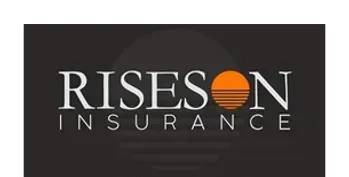
Unveiling the Roadmap: Analyzing Car Insurance Rates in Arizona
February 27, 2024 | Insurance
Car insurance is a vital aspect of vehicle ownership, offering financial protection and peace of mind in the event of accidents or mishaps. In Arizona, like many states, the landscape of car insurance rates is multifaceted, influenced by various factors such as demographics, driving habits, and regional dynamics. In this data-driven exploration, we delve into the intricacies of car insurance rates in Arizona to unveil trends, disparities, and potential insights for consumers.
Regional Disparities: Arizona's vast expanse encompasses diverse urban centers, suburban areas, and rural landscapes, each with its unique characteristics impacting insurance rates. Metropolitan areas like Phoenix and Tucson often experience higher premiums due to higher traffic density, increased risk of accidents, and higher rates of vehicle theft. Rural regions, on the other hand, may witness comparatively lower insurance rates owing to lower population density and reduced traffic congestion.
Demographic Factors: Demographics play a significant role in determining car insurance premiums. Factors such as age, gender, marital status, and credit score can influence insurance rates. Younger drivers typically face higher premiums due to perceived higher risk, while older, more experienced drivers may enjoy lower rates. Additionally, marital status and credit score can impact premiums, with married individuals and those with better credit often qualifying for lower rates.
Driving Habits and Vehicle Characteristics: Driving habits, including mileage, frequency of use, and driving record, heavily influence insurance rates. Safe drivers with clean records are typically rewarded with lower premiums. Vehicle characteristics such as make, model, age, and safety features also affect insurance costs. Newer vehicles with advanced safety features may qualify for discounts , while high-performance or luxury cars may incur higher premiums.
Legislative and Regulatory Environment: Legislative and regulatory factors can impact car insurance rates by shaping the competitive landscape and influencing coverage requirements. State-specific regulations, such as minimum coverage requirements and tort systems, can influence insurance premiums. Changes in laws or regulations, such as reforms to insurance laws or adjustments to minimum coverage requirements, can have ripple effects on insurance rates.
Comparison and Shopping Strategies: Given the dynamic nature of car insurance rates, consumers can benefit from periodically reviewing and comparing insurance options to ensure they're getting the best value. Online comparison tools and platforms make it easier than ever for consumers to compare quotes from multiple insurers based on their specific needs and preferences. Factors to consider when comparing insurance options include coverage limits , deductibles , discounts, and customer service reputation.
Navigating the landscape of car insurance rates in Arizona requires a nuanced understanding of the various factors at play, from regional disparities and demographic influences to driving habits and regulatory dynamics. By leveraging data-driven insights and comparison tools, consumers can make informed decisions to secure reliable coverage that aligns with their needs and budget. As the automotive landscape continues to evolve, staying informed and proactive remains key to ensuring optimal protection on the road.
Reach out to Ben Freeman at Riseson Insurance to discuss your options.
- Arizona's vast expanse encompasses diverse urban centers, suburban areas, and rural landscapes, each with its unique characteristics impacting insurance rates.
- Metropolitan areas like Phoenix and Tucson often experience higher premiums due to higher traffic density, increased risk of accidents, and higher rates of vehicle theft.
- Rural regions, on the other hand, may witness comparatively lower insurance rates owing to lower population density and reduced traffic congestion.
- Demographics play a significant role in determining car insurance premiums. Factors such as age, gender, marital status, and credit score can influence insurance rates.
- Younger drivers typically face higher premiums due to perceived higher risk, while older, more experienced drivers may enjoy lower rates.
- Additionally, marital status and credit score can impact premiums, with married individuals and those with better credit often qualifying for lower rates.
- Driving habits, including mileage, frequency of use, and driving record, heavily influence insurance rates. Safe drivers with clean records are typically rewarded with lower premiums.
- Vehicle characteristics such as make, model, age, and safety features also affect insurance costs. Newer vehicles with advanced safety features may qualify for discounts , while high-performance or luxury cars may incur higher premiums.
- Legislative and regulatory factors can impact car insurance rates by shaping the competitive landscape and influencing coverage requirements.
- State-specific regulations, such as minimum coverage requirements and tort systems, can influence insurance premiums.
- Changes in laws or regulations, such as reforms to insurance laws or adjustments to minimum coverage requirements, can have ripple effects on insurance rates.
- Given the dynamic nature of car insurance rates, consumers can benefit from periodically reviewing and comparing insurance options to ensure they're getting the best value.
- Online comparison tools and platforms make it easier than ever for consumers to compare quotes from multiple insurers based on their specific needs and preferences.
- Factors to consider when comparing insurance options include coverage limits , deductibles , discounts, and customer service reputation.
